The Best Stretches For Every Scenario: From Workout Recovery to Text Neck

If you purchase an independently reviewed product or service through a link on our website, SPY.com may receive an affiliate commission.
Table of Contents
It’s easy for our day-to-day lives to cause our bodies to tense up, whether it be our shoulders after a long day of zooms or our biceps after a grueling arm workout. The best stretches can help you not just alleviate soreness and recover, they can also aid in maintaining your range of motion, and improve flexibility as well.
Today's Top Deals
Price Drop: Amazon's House Brand of KN95 Masks Are Now Just $0.60/Each Today
Over 85,000 Amazon Reviewers Gave This COVID-19 Test 5/5 Stars
Whether you’re running on a treadmill, using a spin bike or lifting weights — stretching is key. The best stretches are like the best strength moves for beginners or the best ab exercises, they’ll work for just about anybody whether you’re training for a marathon, working towards a weightlifting PR or simply maintaining a high level of fitness.
Recovery can take many forms. Some of our favorites here at SPY include using massage guns and wearing pneumatic compression boots, but these methods can be pricey and high-tech. Let’s take it back to basics with some good old-fashioned stretching, shall we?
In this piece we’re going to cover:
Why stretching is important
A note on stretching vs. strength training
Static vs. dynamic stretches
The best stretches for beginners
When you should stretch, and for how long
A 10-minute stretch routine you can incorporate into your daily wellbeing rituals
We consulted a number of experts in the fitness world about the importance of stretching, their favorite stretches and how everyday individuals should stretch in order to optimally care for their bodies. Editor’s note: some quotes have been lightly edited for grammar and clarity.
If You Only Buy One Thing…
Stretching and yoga are ideal home exercises, and you don’t need expensive smart gym equipment or fitness class memberships. You just need a yoga mat and some basic knowledge of the best stretches. If you need a new yoga mat, then we recommend the affordable BalanceFrom GoYoga mat, which is extra-thick, extra-wide and extra-long.
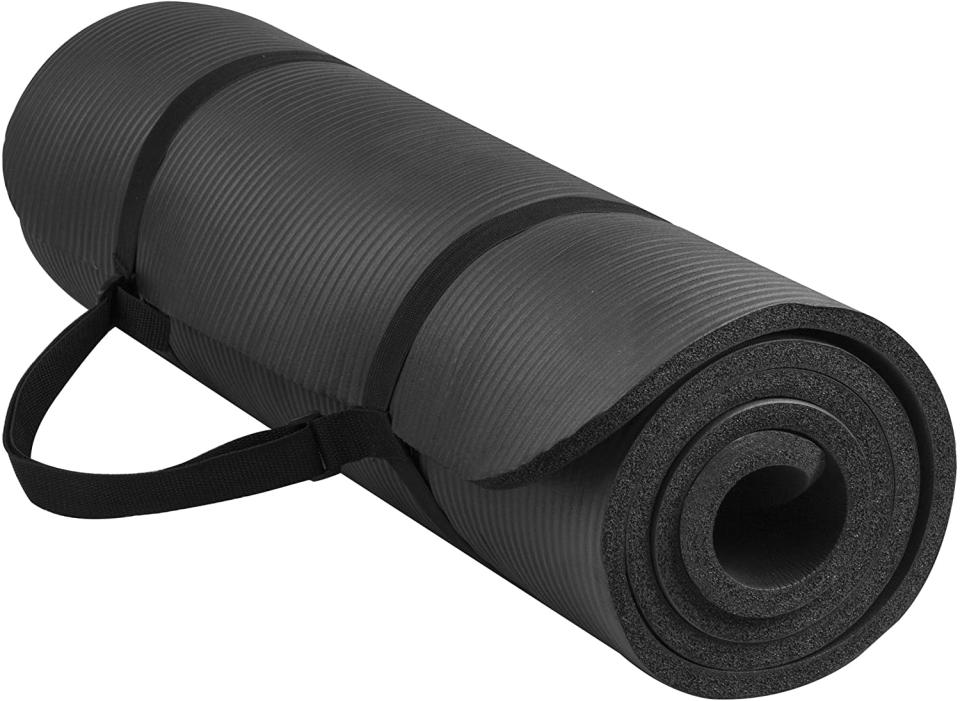
Buy: BalanceFrom Yoga Mat $16.84 (orig. $49.95) 66% OFF
Why Is Stretching Important?
Stretching is a way to care for our bodies during and after a workout. It can help improve flexibility when done consistently for long periods of time and helps our muscles stay flexible as well as strong after difficult strength training sessions. If you don’t stretch, your muscles can shorten, tighten and be harder to use come your next workout.
Rhea Sheedy, a professional dancer trained at the Royal Academy of Dance and founder of Ballet Fusion, a dance fitness studio in the United Kingdom, noted “Stretching helps to maintain and improve our range of motion, as well as lengthening muscles and preventing them from becoming tight.”
A Note on Stretching vs. Strength
When it comes to flexibility, stretching is not the only movement style one should do to become more flexible. A lack of flexibility can sometimes be attributed to a lack of strength, rather than a lack of time spent stretching.
As a certified yoga instructor, I’ve studied how being too flexible can enable you to sink into your joints to get into a certain move, rather than use your muscles and strength, and how this can ultimately do more harm than good.
Danny Lenhert, a Doctor of Physical Therapy as well as a Certified Strength and Conditioning Specialist, noted the important distinction between limited mobility due to a lack of flexibility and limited mobility because of underdeveloped muscles.
“As a society, we are obsessed with stretching because it is easy to do and we think we improve “flexibility” to decrease injury risk and be healthier. Most of the time, my clients lack strength, not flexibility.”
He added that “If someone has a difficult time squatting down to pick something up, it is not usually due to a flexibility issue, but it is more likely a strength issue.”
This emphasizes the importance of doing both, strength work and stretch work. If you need guidance in the strength department we have plenty of pieces you can reference, from hamstring exercises to arm workouts.
Static vs. Dynamic Stretches
There are two distinct types of stretches you can do before, during and after a workout. Static stretching is still, with poses held for longer periods of time. This is the type of stretching you typically imagine when you hear the phrase “make sure you stretch!”
Then there’s dynamic stretching, which is done while moving, to help warm up your muscles and get your blood flowing while lengthening your muscles. Dynamic stretching is more likely to happen before or during a workout, as it’s used to prime the body for movement rather than help it recover.
Steve Hruby, a chiropractor and co-owner of Super Humm, notes that “Dynamic stretches may be better for improving speed and agility through sports like soccer or basketball. Static stretches may be better for people looking to improve flexibility and reduce the chance of injury while working out. Each group would likely benefit from a mix of both types of stretches.”
Read More: The Best Ab Exercises
The Best Stretches for Beginners
Child’s Pose
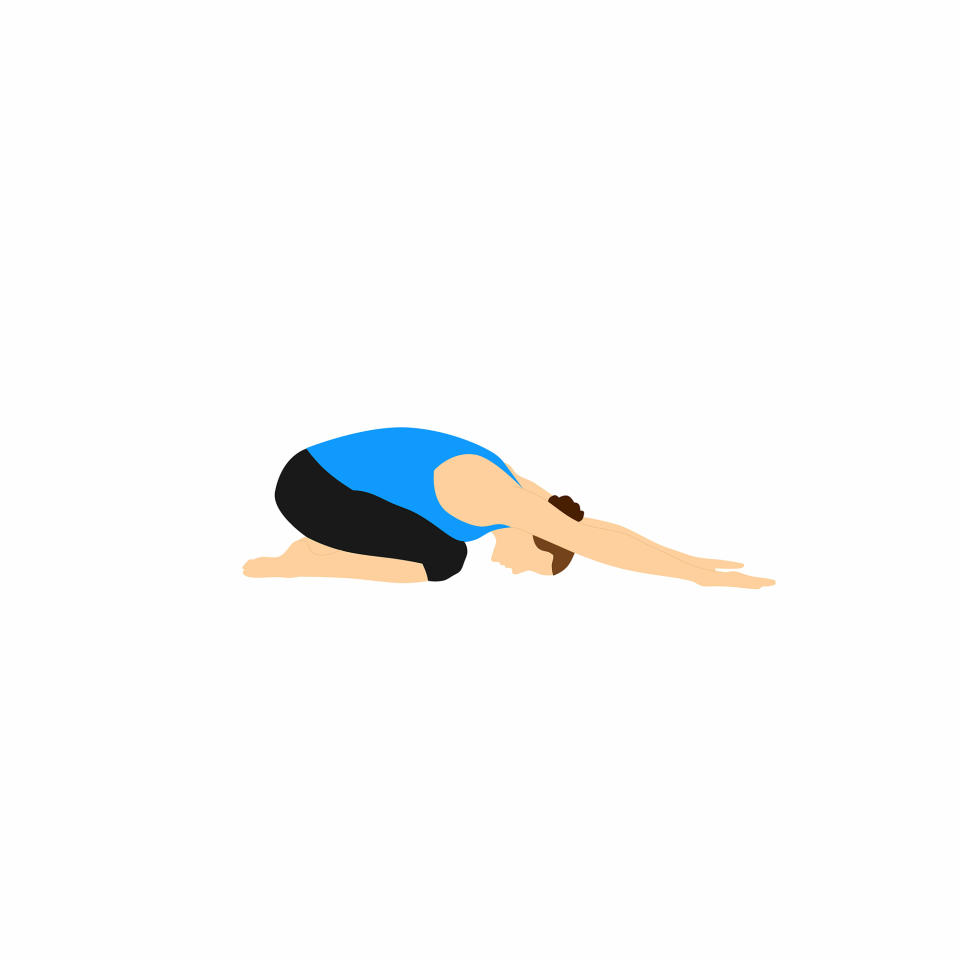
You’ve probably done this stretch at the end or beginning of a yoga class, or at the end of a strength circuit when your arms and shoulders need a moment of rest. It’s a great upper body stretch because it works the shoulders, arms and back, which can easily wind up in knots after many days in a row at a computer.
Phil Arrellin, an exercise instructor with Chuze Fitness in New Mexico, notes that “Child’s pose is a great way to stretch your back and the muscles around your hips.”
“From a kneeling position sit your hips back toward your heels and bring your forehead down to rest on the floor with palms and forearms flat to the floor. Think about lengthening through the spine and sitting the hips back farther as you take some deep breaths.”
Cobra Stretch
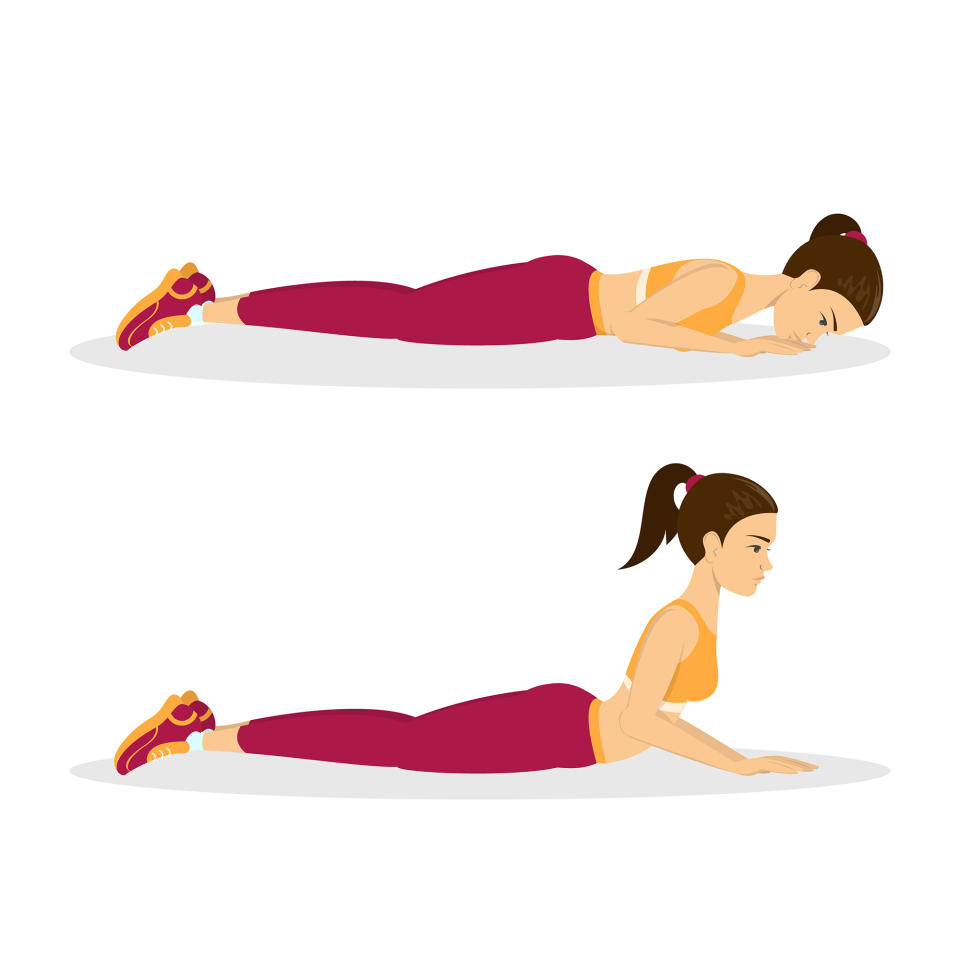
This is one of my favorite stretches to do between child’s poses, because all you need to do is rock back and forth on your knees to accomplish both stretches in one.
If you’re coming from child’s pose, you rock forward on your knees and place your hips on the ground, keeping your hands pressed into the floor and your upper body, stomach, shoulders and head all lifted. Let your lower body relax as you bend back, stretching your abdominal muscles, the front of your arms and the front of your neck as well.
Figure Four Stretch
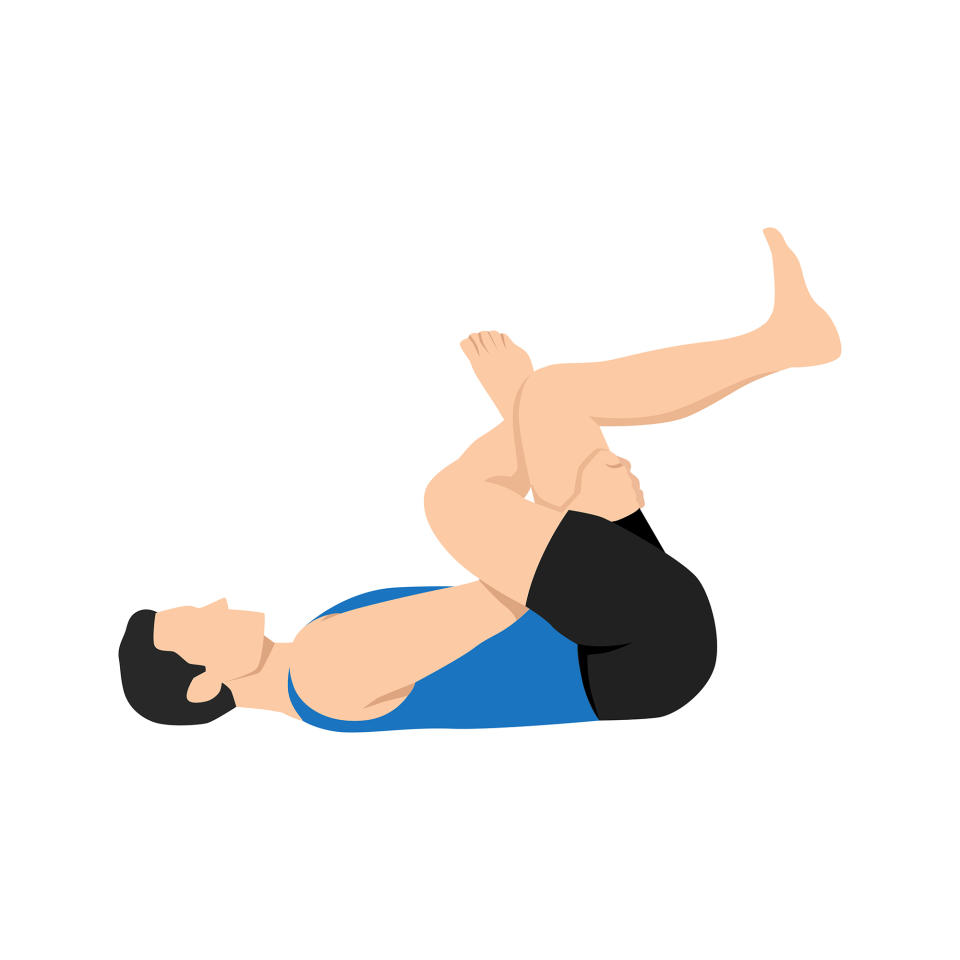
Unlike the previous two stretches, figure four primarily works the lower body and is great for those with tight hips or pain in their lower back.
Arrellin explained that “For so many of us, a lot of tension can settle into the hips and glutes. A great stretch for this area is figure four. Figure four is created by crossing the ankle of one leg across the knee of the opposite leg.”
“This can be done in a seated position, standing, or lying flat on your back. The deep stretch comes when the chest is drawn closer to the knees regardless of which position you choose,” said Arrellin.
I love a figure four stretch at the end of a workout, or conclusion of a workday, because you’re lying on the floor, which is calming in and of itself, and it helps reduce soreness in my hip flexors and lower back, which can get very tight during the workday.
Hip Flexor Stretch
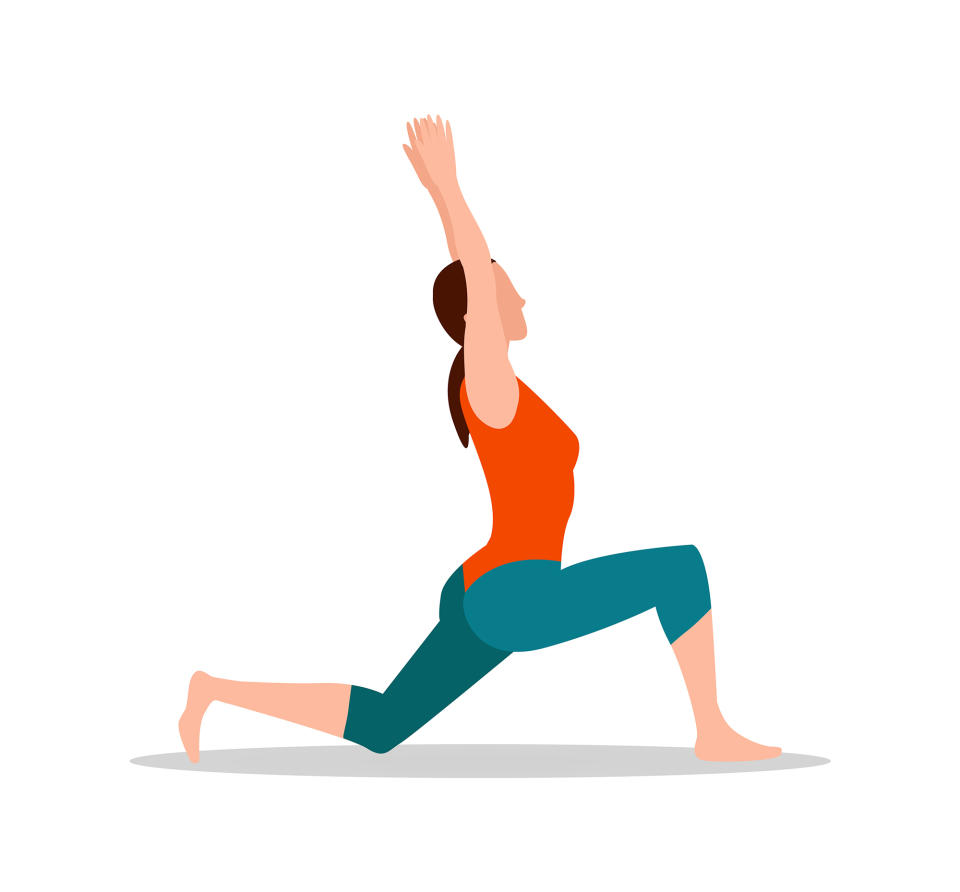
Another great stretch for after a workout for your lower body is a hip flexor stretch, which is done from a low kneeling position with one leg in front, one leg behind, both in a 90-degree bend.
Arrellin instructed that you “Start in a low lunge on the floor with both knees at a 90-degree bend. Then lean forward slightly and allow the hip of the leg with the knee to the floor to sink down. You can keep your hands resting on your hips or extend upward to lengthen through the spine. You can also reach one arm toward the floor or open to a twist to deepen the stretch.”
I also like to grab the wrist of the leg not in front and stretch over towards the side of the bent leg, creating a stretch down the entire length of that side of the body, and then switch and do the other side after about a minute or so.
Kada O’Connor, CorePower Yoga Teacher, also noted that stretches that target the hips are her favorite. “For example, forward folds are great for stretching your hamstrings, IT band stretches for outer hips (from standing, cross your ankles, bend your knees and take a forward fold to any level. Feel the stretch in your IT band/outer legs), runners lunge to stretch psoas (hip flexors/front of hips) and side lunges to stretch and lengthen inner thighs.”
Half Dog Stretch (Otherwise Known as Dolphin Pose)
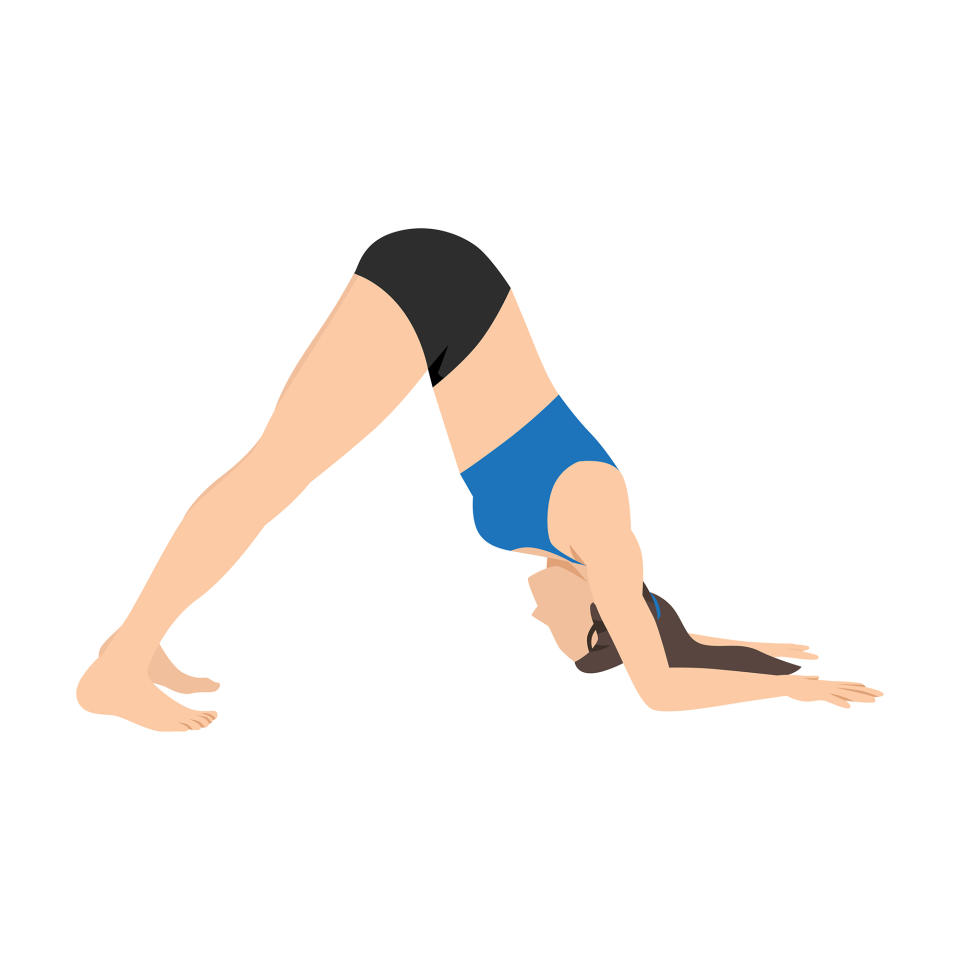
I knew this stretch as dolphin pose when I was studying yoga, but according to Brett Larkin, founder and CEO of Uplifted Yoga, it’s a half-dog stretch. Basically, it’s a downward dog pose with your forearms on the ground, which creates a more intense stretch for your upper body and shoulder girdle.
“Everyone is glued to their devices these days and that means we’re walking around with tight upper bodies and sore shoulders. As such, shoulder stretches are some of the most versatile yoga poses. My favorite is half dog stretch, which looks like downward dog but requires you to keep your forearms on the ground, creating a deep stretch in the upper body,” said Larkin.
“Start off in Child’s Pose. Keep your arms extended and lift your hips over your heels. Move your arms forward and let your spine drape towards the floor. Stay here for 3-5 breaths, then lower your lower body so you’re back in Child’s Pose. Rest with your arms parallel to your legs, palms up.”
When Should You Stretch? And For How Long?
This is a great question, and one I posed to each of our experts to gauge their professional opinion. Most said you should stretch after a workout, rather than before, since your muscles are more warmed up and ready for movement.
O’Connor noted that you should “Try to stretch a bit every day! If that’s not feasible, I’d recommend a least two practices per week to maximize benefits and increase flexibility.”
Ken Probst, a personal trainer, kinesthesiologist, bodybuilder and owner of LongHealthyLife Co explained that “Everyone should stretch after a workout when the muscles are warmed up. The stretches should target every major muscle group in the body. Each stretch should be done without pain and should be held for 30 seconds, 3 to 5 times.”
Sheedy also noted that you shouldn’t stretch when your muscles aren’t warm, and that after a workout is the more ideal time to sink into deeper stretching.
“Remember – don’t stretch if you are not warm. You don’t need to stretch before you start, it will be much more beneficial to stretch during and after a workout. Each stretch you take when warm will help to reduce muscle pain or DOMS (delayed onset of muscle pain) and help recovery,” said Sheedy.
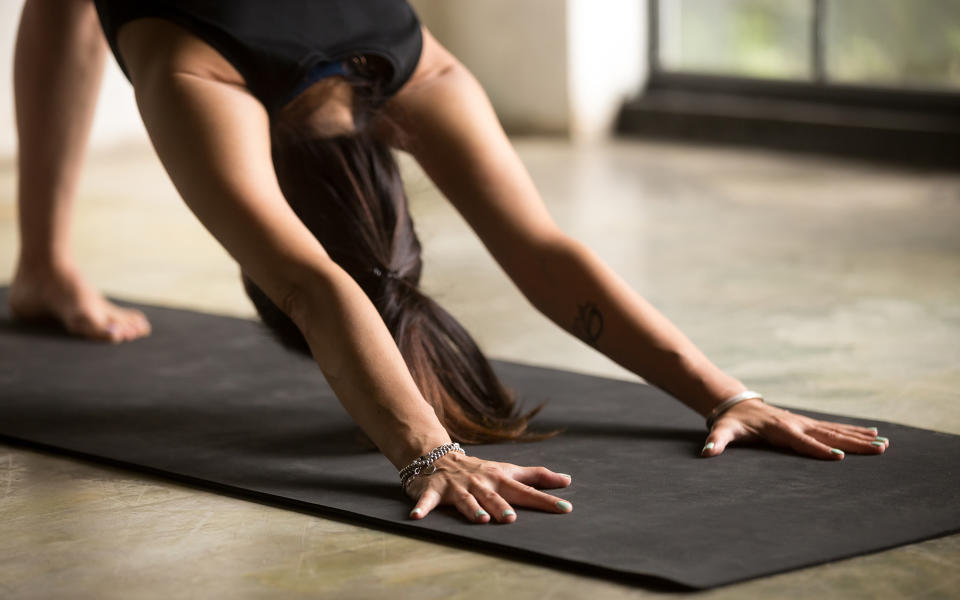
A 10-Minute Stretch Routine You Can Try
Sheedy also offered this 10-minute stretch routine to our readers, designed to target “hard-to-reach muscles (with high-resolution videos demonstrating each stretch), helping to prevent injury and improve flexibility – because there really is a right and wrong way to stretch.”
Working this routine into your everyday wellness regimen can help your body no matter how much physical activity you do.
Reverse Shoulder Stretch (1 minute)
Stand looking straight ahead, feet shoulder-width apart and arms by your sides. Clasp your hands behind your back with thumbs pointing towards the floor.
Stand tall, open your chest and move your hands back and towards the ceiling – feeling a stretch in the shoulders and biceps muscles.
Supine Crocodile Spine Release (1 minute)
Lie on your back with arms out to the sides, palms up. Bend one knee and drop it across the body at 90 degrees
Gently lift the opposite hand and bring it to join the hand closest to your bent knee (like a clap or crocodile snap), inhaling through the nose.
Slowly open the arm out again, gently exhaling and feeling a release in the spine. Repeat 5 or 6 on each side.
Lower Back Stretch (1 minute)
Start by lying on your stomach, legs straight out, arms bent with hands placed next to either armpit, elbows by your side.
Push your upper body up off the ground and towards the ceiling, keeping the hips firmly on the floor and pushing back away from your hands. Return to the neutral lying position, and repeat.
Rotating Hip and Stomach Stretch (1 minute)
Staying on the ground, lie face down and bring your hands close to your shoulders. Keep your hips on the ground, look forward and rise up by straightening your arms.
Then slowly bend one arm and rotate that shoulder towards the ground.
Seated Frog Stretch (1 minute)
Start on the floor with your knees bent and the soles of your feet pressed together, legs drawn in and hands resting on your ankles.
Gradually press your knees down towards the ground until a stretch is felt, keeping the spine long and gradually bending forwards with the aim of touching your forehead to your toes.
Face-down Frog Stretch (1 minute)
Position the body so that you’re resting on your elbows and knees, back straight, and gradually spread the knees apart, pressing the hips down towards the floor and making sure you keep the knees in line with the hips (this bit is important!).
Once you have gone as far as you can, take several deep breaths and relax into the position, holding for 20 – 30 seconds before repeating.
Down Facing Dog Arabesque (1 minute)
From a downward-facing dog position, lift the pelvic floor and pull the shoulders back away from the ears.
Lift one leg high into an arabesque, allowing the hip to turn out. Hold for 5 to 10 secs and repeat with the other leg.
Grand Plie Hip Opener (1 minute)
Stand with feet wide apart, legs turning out from the hips. Drop your tailbone and bottom down towards the floor.
Rest your elbows or forearms on the inside of the thighs and sit in this stretch for 30 seconds and repeat.
Barre Hamstring Stretch (1 minute)
Stand at arm’s length from the barre (or table) and lift your right leg up to meet the barre.
Rest your foot over the barre and hinge your upper body forward to lean into your leg.
Then, switch and stretch your left leg.
Standing Quad Stretch (1 minute)
Stand with one leg planted firmly on the ground. Lift your other leg up behind you, bending at the knee, and grab the ankle with your corresponding hand, guiding your foot in toward your body. You should feel this stretch in your quadriceps and hip flexors.
More Top Deals from SPY
Best of SPY

